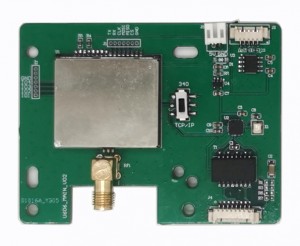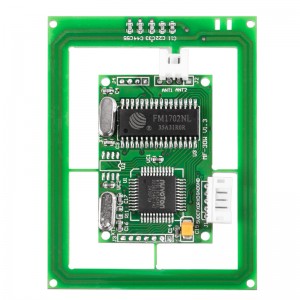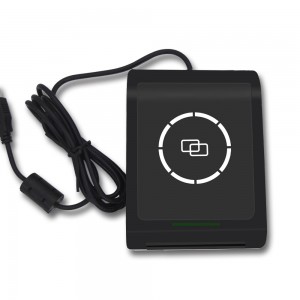Classification of non-contact IC cards
Basic knowledge of IC cards: 1. Divide into contact IC cards, non-contact IC cards, and composite cards (dual interface cards) based on interface methods. 2. Divide into non encrypted storage cards, logic encrypted storage cards, and CPU cards based on device technology
Classification of non-contact IC cards
1、 Low-frequency card
The working frequency range is 30kHz~300kHz. Typical operating frequencies include: 125KHz, 133KHz. Low frequency tags are generally passive tags, and their working energy is obtained from the radiation near-field of the reader coupling coil through inductive coupling. When transmitting data between the low-frequency tag and the reader, the low-frequency tag must be located in the near-field area radiated by the reader antenna. The reading distance of low-frequency tags is generally less than 1 meter.
Typical applications of low-frequency tags include animal recognition, container recognition, tool recognition, electronic locking anti-theft (car keys with built-in responders), etc. The international standards related to low-frequency tags include ISO11784/11785 (for animal identification) and ISO18000-2 (125-135 kHz).
2、 Medium to high frequency card
The working frequency is generally between 3MHz and 30MHz. The typical operating frequency is 13.56MHz. Due to its working principle being identical to low-frequency tags, it operates in an inductive coupling manner.
Intermediate frequency tags can be easily made into card shapes, and typical applications include: electronic tickets, electronic ID cards, electronic locking anti-theft (electronic remote control door lock controller), etc. The relevant international standards include ISO14443, ISO15693, ISO18000-3 (13.56MHz), etc.
3、 Ultra high frequency and microwave cards
RF tags in the ultra-high frequency and microwave frequency bands, abbreviated as microwave RF tags, have typical operating frequencies of 433.92MHz, 862 (902)~928MHz, 2.45GHz, and 5.8GHz. Microwave RF tags can be divided into two categories: active tags and passive tags. The reading distance of the corresponding RFID system is generally greater than 1m, with typical cases ranging from 4 to 6m and a maximum of over 10m. Reader antennas are generally directional antennas, and only RF tags within the directional beam range of the reader antenna can be read/written.
The typical applications of microwave radio frequency tags include: mobile vehicle identification, electronic ID card, warehousing and logistics applications, electronic locking anti-theft (electronic remote control door lock controller), etc. The relevant international standards include: ISO10374, ISO18000-4 (2.45GHz), -5 (5.8GHz), -6 (860-930 MHz), -7 (433.92 MHz), ANSI NCITS256-1999, etc.





















